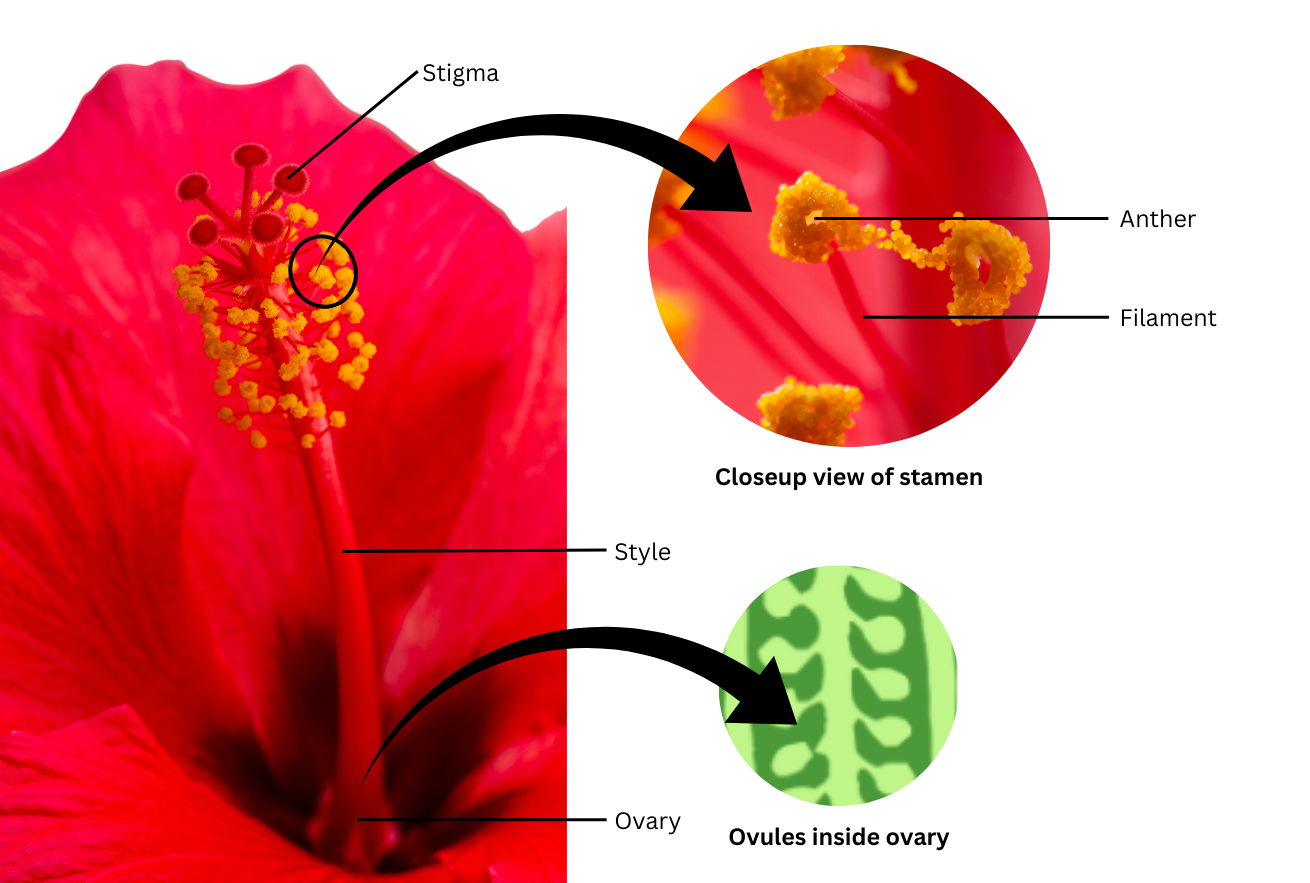4. Complete Activity 8.4 (Page 86). Take a mustard/ China rose/ petunia flower and separate its reproductive parts. Study the various parts of a stamen and pistil.
Answer: The Activity 8.4 should be carried out in the following way:
Aim: To examine the different parts of the stamen and pistil of a China rose flower.
Materials Required: China rose flower.
Procedure:
(i) Take a China rose or Hibiscus and study the various parts of a stamen or pistil.
(ii) Slice open the ovary and take a look at the ovules. Use caution while doing this.
Observations:
- Attached to the central tube-like structure there are some slender stalk-like structures that end in oval-shaped yellow grains.
- Starting from the enlarged base the central tube-like structure ends in a series of lobes at the top.

Conclusions:
- The central tube-like structure is called the style, the enlarged base is called the ovary and the lobe-like structures at the top of the central tube is the stigma. The stigma, style and ovary together form the female reproductive organ called pistil.
- The slender stalk-like structures attached to the central tube are called filaments and the oval-shaped yellow grains at the top are called anther. The filament and anther together form the male reproductive organ called stamen.
“Take a mustard/ China rose/ petunia flower and separate its reproductive parts. Study the various parts of a stamen and pistil.” – Solved.
Related Links:
Solution to Extended Learning Problem 1
Solution to Extended Learning Problem 2
Solution to Extended Learning Problem 3
Solution to Extended Learning Problem 4
Solution to Activity 8.1
Solution to Activity 8.2
Solution to Activity 8.3
Solution to Activity 8.4


